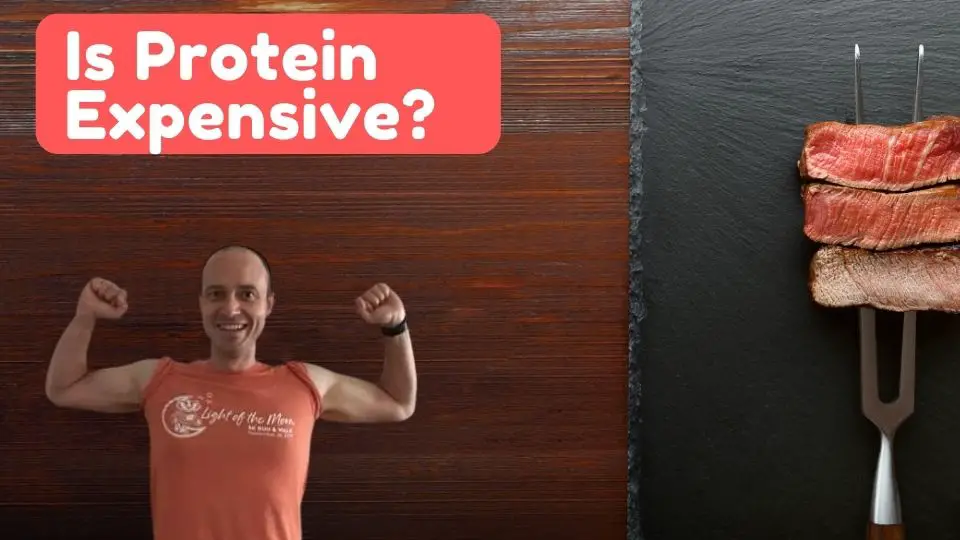If you haven’t seen an advertisement for Severance, the new TV show distributed by Apple TV, I’m concerned that perhaps your brain has been “severed”.
Severance may be the perfect TV show for 2022 with a stinging commentary about the work-life balance of white collar jobs set in a dystopian office landscape eerily similar to Stanley Kubrick’s 2001: A Space Odyssey.
I’ve binge watched all of the released episodes and can’t stop thinking about how accurately the dystopia uses allegorical imagery to make everyone who works in an office question their very existence.
It also got me thinking a lot about the financial independence/early retirement (FIRE) movement, which markets itself as the antidote to a soul-sucking job. Does it really address any of the core issues about work that Apple’s Severance presents?
A note about spoilers…
Most of this post steers clear from any spoilers that you wouldn’t get from the trailer or from watching the first 15 minutes of the first episode.
But, if you don’t want *any* of Severance by Apple TV spoiled, then perhaps you should stop reading this blog immediately and go watch the show.
Seriously. It’s that good.
What’s Apple’s Severance about anyway?
The story follows Mark (Adam Scott) who works for the mysterious Lumon company.
Mark works in a special “severed” division within the Lumon company. Employees in this division have a surgical procedure which completely separates their memories of their work life and home life.
After 2 years where many Americans had to work from home while helping their kids navigate virtual school, lots of people may practically be begging for a surgical boundary between work life and home life.
However, Apple’s Severance shows us the dark side of this fantasy.
When Mark exits the elevator on the “severed” floor, Mark loses all sense of self and instead becomes a person whose only memories and entire existence consists of office life. Work Mark (called his “innie” on the show) has no idea about his outside self (“outie”), whether he has a family, or what he enjoys doing while out of the office.
This framework is the perfect mirror in which to examine modern white collar work (especially many government jobs).
1. How many of us are our true, authentic selves at work?
Much of Severance (or at least what Apple has released so far) takes place in the office. The “innies” interact with each other in a sterile, white, creepy environment.
Despite knowing nothing about their “outies”, the workers have interactions that are remarkably similar to any other office conversation.
- They have inside jokes
- They’re motivated by silly productivity goals
- Team members have “friendships” based entirely off of their work selves.
Are we really any different from Mark, Helly, Irvan, and Dylan?
Now you may be like, “Sam, I have real friends at work”.
And you might.
But are they different from friends that you choose of your own volition? Do even your closest coworkers know who you really are? (We can’t all be like Kitty of Bitches Get Riches)
For example, although I have close relationships with many of my coworkers, none of them have ever talked to me about my blog (if they even know it exists). My blog is such a huge part of my identity. It is the thing I’m most proud of. I spend countless hours working on it and dreaming of what I want it to become.
And not once have I had a conversation about it with a coworker.
In some ways I’m jealous of the characters in Severance. Their pathetic office relationships are just as shallow as most office friendships are. But at least Mark and Dylan are honest about what they are to each other. There’s no pretext that they’re anything more than friendly coworkers.
Does the FIRE movement fix this?
Read enough FIRE blogs and you’ll eventually stumble upon people who want to pursue FIRE to be who they “really are”.
Which is great.
I think our work-selves are really just an avatar of the office personality we select for ourselves. Ditching the office is obviously the answer for this… right? On the other hand, you might be surprised at how difficult it can be to really be your true authentic self.
Having a “work-Sam” and a “home-Sam” allows me to not really care too much if things aren’t going my way. If work-Sam is unhappy, I can just daydream about home-Sam. Or if home-Sam is unhappy I can just blame work-Sam.
Leaving our office avatar behind forces us to really embrace our whole self, our truest self. And honestly, not a lot of people can handle that.
Which brings us to the second reason Apple’s Severance cuts so deep.
2. We throw ourselves into our work because we can’t stand being with ourselves
All of humanity’s problems stem from man’s inability to sit quietly in a room alone
Blaise Pascal
You find out very quickly that one of the members in the severed team chose to work in that division to distance themselves from a traumatic event in their personal life. They are able to forget their trauma for 8 hours a day, 5 days a week.
Guess what? People also throw themselves into their work in the real world because they can’t bear to sit with themselves in silence. In fact, anyone who has tried to meditate on a consistent basis can tell you that occasionally meditation can be excruciatingly painful.
Being comfortable with ourselves is hard. It’s so much easier to distract ourselves rather than deal with our demons. Addictions fix our inability to sit quietly by giving us something to chase.
While we’ve stigmatized people that deal with the difficulties of an unquiet mind by sticking a needle in their arm or drinking until they blackout, workaholics are praised as being virtuous and ambitious. (Although many times the root cause of the addiction is the same.)
Does the FIRE movement fix this?
Rather than fixing the need to “medicate” by working, the FIRE movement can sometimes intensify these tendencies.
Who hasn’t read a message board where someone has devoted themselves to early retirement, calculated the amount of money they need to quit, and then fully jump into overdrive to achieve that level of wealth.
Overtime, side hustles, rental properties, thrift store flipping, crypto staking. All the money.
Obsessing about reaching your FIRE number can easily placate any uneasiness that happens when you try to sit quietly.
Until you reach your FIRE number… at which point you are forced to face yourself in a mirror.
Which brings me to the best FIRE movement allegory within Apple TV’s Severance…
3. We think we can leave but we really can’t
In the show, there’s a striking scene where one of the severed employees wants to quit and is shown the exit and allowed to leave. However, every time they try to break free, they find themselves back right where they started
(Note- this allegory is way cooler on the actual show, but I don’t want to spoil too much)
What white collar worker hasn’t dreamed of telling their boss to shove it and quit on their own terms?
FIRE might give you the means to leave the office whenever and however you want to. But what comes next?
People’s early retirement stories might get the headlines, but I’m much more interested in stories about people that return to the office.
For example, LivingaFI was brutally honest about his 6 year early retirement stint and his decision to return to the workforce.
And it’s not just LivingaFI. Jim Wang of Wallethacks also talks about how hard it is to transition into retirement. Jim does a wonderful job of describing how retirement is not just leaving a job, but in someways is a rebirth into a new person.
Part of us dies when we leave the office
In Apple’s Severance it’s made clear that quitting (or getting fired) is equivalent to murdering the “innie” whose entire existence resides within the creepy basement of the Lumon complex.
While early retirement is far different from suicide, Severance captures the fact leaving a job isn’t as simple as putting in a two-week notice.
When I quit, work-Sam will no longer exist. Work-Sam may be the most boring part of me. But after working in the same building for 21 years, I can’t expect to quit and be the same.
Instead of a violent murdering of my work-Sam, I am trying to visualize my eventual departure like that of a phoenix. Both work-Sam and home-Sam must perish, but I want to plan my life now to set my rebirth up for success.
Leaving the Lumon company is not an option, but are you sure you’re ready for early retirement?
In Apple’s Severance, severed employees are literally unable to leave their jobs. Just like a Harry Potter Horcrux, these people have severed part of their soul and put it in their job.
While the show is an extreme example, can you honestly say that not one single part of your identity is stuck within your job?
And if you dream of freedom beyond the office, the FIRE movement my provide hope of breaking free.
However, Severance shows us just how hard it can be to completely disentangle our identity from our jobs.
If your FIRE plans only consist of spreadsheets and safe withdrawal rates, I recommend you give Severance an introspective viewing and reassess whether you are really ready to kill your “innie” and how killing your “innie” will change your day-to-day life.



